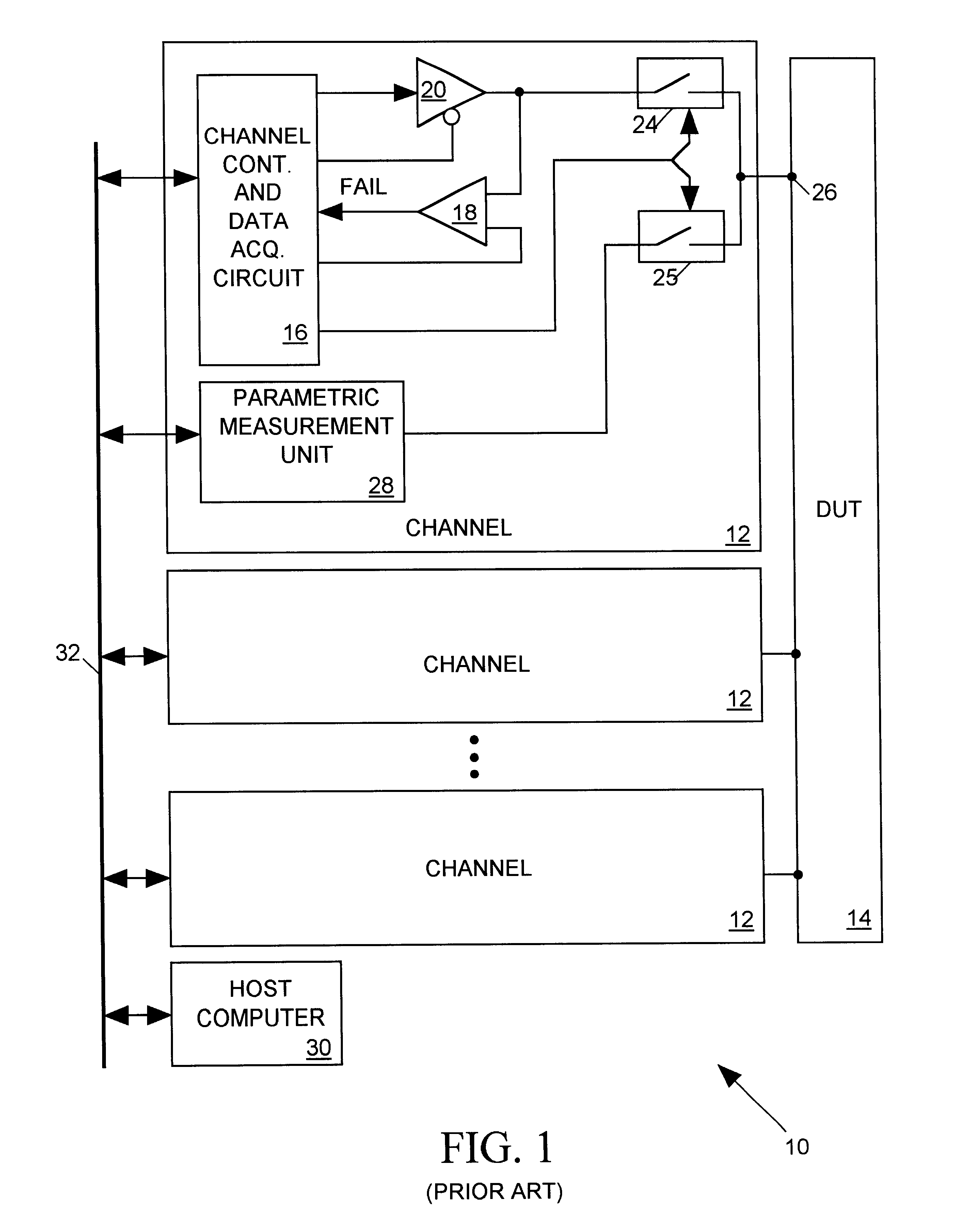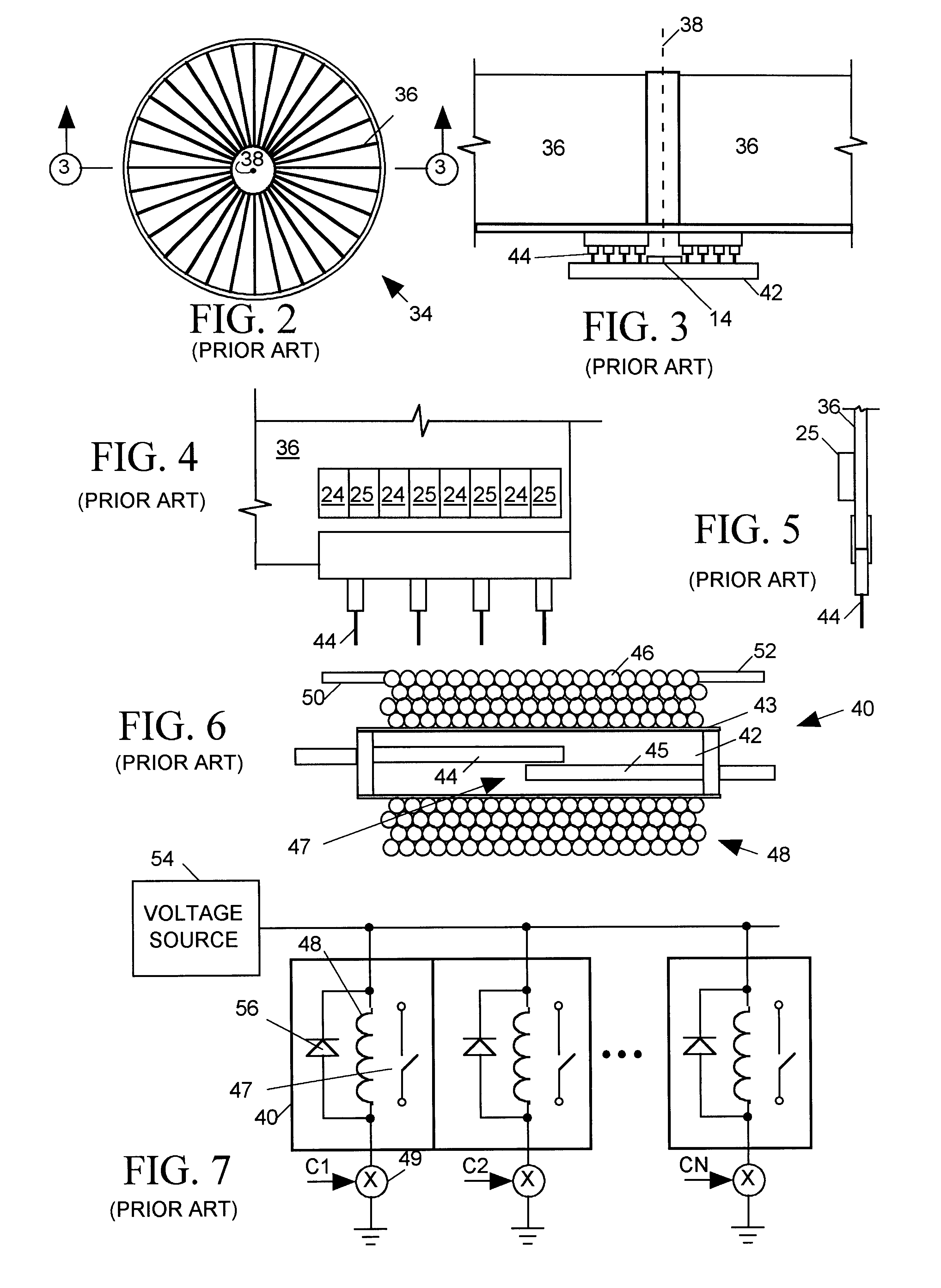Low profile, current-driven relay for integrated circuit tester
- Summary
- Abstract
- Description
- Claims
- Application Information
AI Technical Summary
Benefits of technology
Problems solved by technology
Method used
Image
Examples
first embodiment
FIG. 9 illustrates a sectional view of a relay 70 in accordance with the invention. Relay 70 includes a glass tube 72, relay contacts 74 within tube 72 formed by reeds 73, and a coil 76 formed by several turns of insulated copper wire 78 surrounding tube 72. Since coil 76 conducts a relatively large current, only a single layer of turns of wire 76 is required. Thus coil 76 adds relatively little thickness to relays 70. In accordance with the invention wire 78 has a rectangular, rather than a circular, cross-section so that there is no wasted space between coil turns. A conductive shield 79 partially surrounding tube 72 acts as a ground surface for the transmission line formed by reeds 73. The spatial arrangement of shield 79 and reeds 73 influences the transmission line impedance. Shield 79 may be formed, for example, by a sheet of conductive foil wrapped partially around tube 72 or by depositing a layer of metal directly on the outer surface of tube 72. Shield 79 may be grounded th...
second embodiment
FIG. 10 is a sectional plan view and FIGS. 11A and 11B are alternative sectional elevation views of a relay 80 in accordance with the invention. Relay 80 has a coil assembly 86 formed by a "flex circuit" comprising conductors 88 embedded in a sheet of flexible insulating material 83,85. The flex circuit coil assembly 86 is wrapped around a glass tube 82 containing reeds 84.
FIGS. 12 and 13 are plan and sectional elevation views of flex circuit forming coil assembly 86 before it is wrapped around tube 82. Referring to FIGS. 10-13, coil assembly 86 is implemented by a flex circuit including flexible, insulating plastic substrate layers 83 and 85 and a set of flexible conductors embedded between insulating material layers 83 and 85. The two flexible layers 83 and 85 of assembly 86 are offset so that conductors 88 are exposed on both ends 92 or 94 of coil assembly 86. When the assembly 86 is wrapped around tube 82, ends 92 and 94 overlap so that ends of adjacent conductors 88 contact wit...
third embodiment
FIGS. 14 and 15 are exploded perspective and sectional elevation views, respectively, of a relay 100 in accordance with the invention. Relay 100 includes a glass tube 116 containing reeds 117 and a coil assembly formed by traces 102 and vias 104 formed on and in a printed circuit board 106. Circuit board 106 includes a lower substrate layer 108 and an upper substrate layer 110 having adjacent recesses 112 and 114 for receiving relay tube 116. conductive layer 119 embedded in lower substrate layer 108 provides a ground surface for the transmission line formed by reeds 117. Alternatively a shield partially surrounding tube 116 (similar to shield 79 of FIG. 9) may provide the ground surface for the transmission line. Tube 117 may have a round cross-section as illustrated in FIG. 15 or may optionally have a rectangular or other cross-section.
PUM
 Login to View More
Login to View More Abstract
Description
Claims
Application Information
 Login to View More
Login to View More - R&D
- Intellectual Property
- Life Sciences
- Materials
- Tech Scout
- Unparalleled Data Quality
- Higher Quality Content
- 60% Fewer Hallucinations
Browse by: Latest US Patents, China's latest patents, Technical Efficacy Thesaurus, Application Domain, Technology Topic, Popular Technical Reports.
© 2025 PatSnap. All rights reserved.Legal|Privacy policy|Modern Slavery Act Transparency Statement|Sitemap|About US| Contact US: help@patsnap.com



